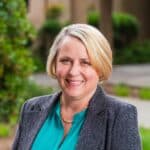As one of CCAP’s newest board members, Ginese Quann brings a unique perspective on California’s charter school system. She has been in the charter school world for about 25 years, working first as a teacher in a Southern California charter school and then moving into administration to help build it into a charter network. Nine years ago, she left the network that has led to her current position as executive director of the El Dorado County Charter SELPA (Special Education Local Plan Area), one of five all-charter school SELPAs.
“I’ve been through all the ups and downs,” says Quann with the knowing laugh that only a veteran insider can appreciate. But Quann says that California’s charter school system has “matured” over the past quarter century. Part of that stems from legislation that has forced changes in systems, processes, and practices. Improvements also grew organically, as more people like herself have transitioned from operators to authorizers and are more open to change.
“We’ve lived it, we’ve breathed it, we understand it,” explains Quann. “Do I see it everywhere? No.”
One of her key motivations for joining the CCAP board is its mission of creating “a consistent standard of practice among authorizers” across the state and a more robust network to share best practices and support charter schools, especially those that are struggling.
Networks also provide an opportunity to share information about the questionable charters in the charter world. The El Dorado County Charter SELPA lost nearly $7 million in the A3 charter school fraud. It took almost three years to recover the funds. They had no idea what A3 was doing because there was no formal network or system that enabled authorizers and charter schools to communicate with one another about operators to keep an eye on, or even those doing innovative high-quality work.
“We have a framework from the state in oversight responsibility, but how that responsibility and oversight is implemented varies extremely throughout the state,” noted Quann.
In special education alone, she says the El Dorado County Charter SELPA receives calls not just from charter schools but also from authorizers across the state who aren’t sure what their oversight responsibilities are and, in some cases depending on who is assigned authorizing duties, don’t really understand what quality programs, supports, and services look like for special education students.
Quann has made it a priority to build those relationships and networks in the El Dorado County Charter SELPA, and it is clearly resonating with authorizers and charter schools and their networks. The SELPA has tripled in size since Quann arrived, growing from fewer than 100 charter organizations to 220 partners representing 440 charter schools.
“What we hear a lot of times from our partners is that they feel supported,” explains Quann. They tell her that in traditional SELPAs composed of districts they often felt overlooked or underrepresented. “I think especially with our SELPA, they definitely feel they’re with kindred spirits.”

